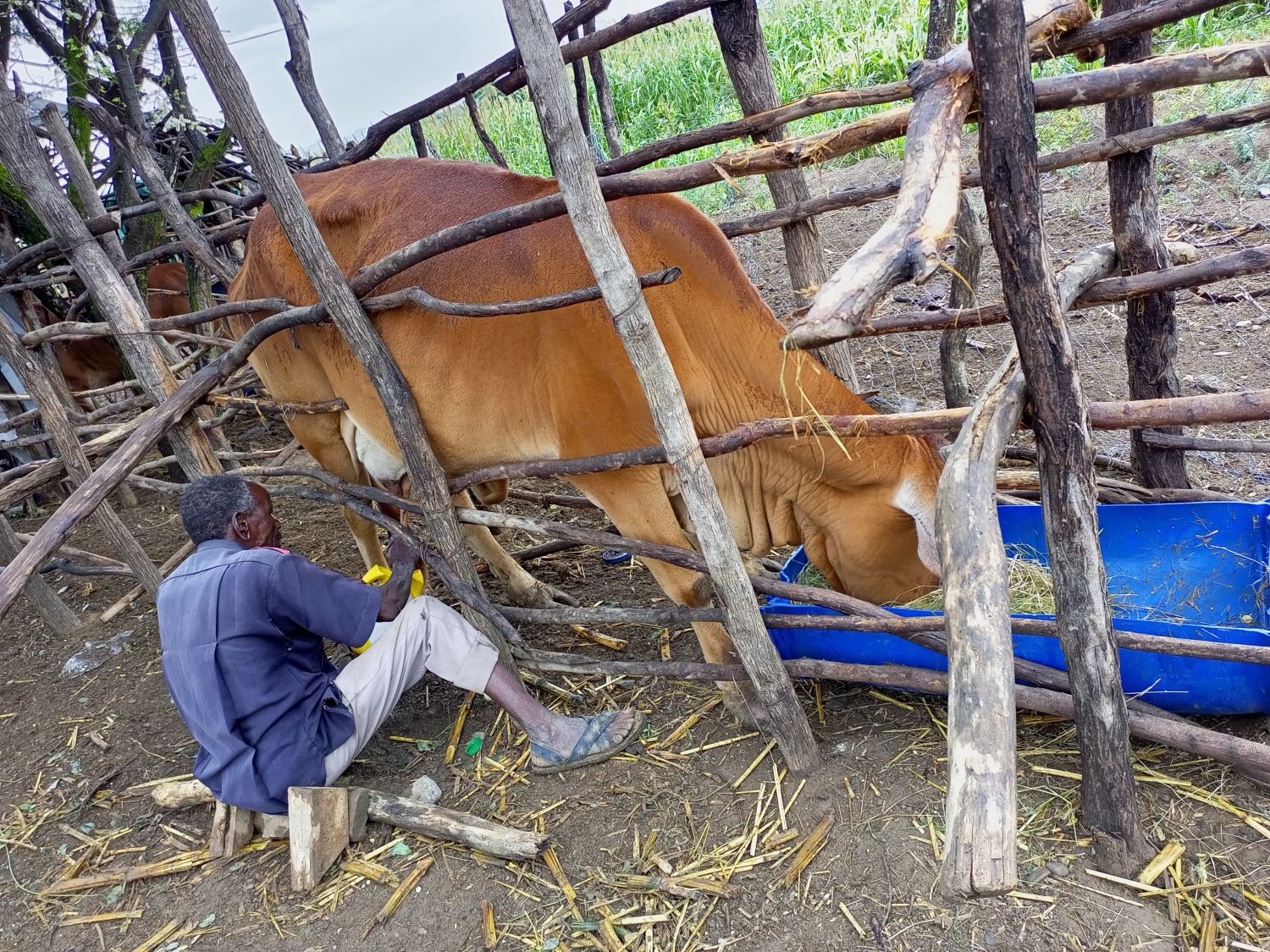Milk plays important cultural, nutritional and economic roles in the lives of agropastoralists in Kenya and Ghana. Our research finds that agropastoralists and policy actors alike are intrigued by the potential of a market for heritage milk products, but market development is impeded by poor infrastructure.
Milk-based products are used in everyday and ceremonial activities, and sold in very small-scale dairy markets. Meanwhile, traditional livelihood options are often under stress in contexts of environmental and socioeconomic change. In our project, agropastoralists contemplated whether there could be any value in alternative types of engagement in more artisanal types of markets, for marketing small quantities of milk based on cultural and heritage values.

Read the Policy Briefing: Milk Markets in Agropastoralist Areas of Africa
Milk marketing in the changing context of agropastoralism in Africa
Baringo county, Kenya, and parts of Northern Ghana, are semi-arid landscapes where agropastoralism has traditionally offered a livelihood option that is adaptable to environmental unpredictability and resource heterogeneity. Productivity, however, is low and fluctuates, and weak, unreliable road, electrification and communications networks, among other infrastructural deficits, make it hard to supply markets in a predictable fashion.
Nationally, Kenya has some large-scale milk markets, which agropastoralist groups do not tend to participate in because of their location in high productivity regions and requirement for high capital investment. Yet, in Kenya, national and county level policies claim to promote the dairy value chain, and point to dairy as a growth industry. Baringo county government encourages intensified production and a move to zero grazing, in part as a response to changing conditions, which has been associated with agropastoralists’ sedentarisation over the preceding decades.
Ghana’s dairy industry is small and dominated by multi-nationals and importation of milk products, and there is limited policy intention towards developing it. Ghana has focused strongly on promoting state ranches to tackle perceived farmer-herder conflicts and substitute beef imports, and developing a milk industry around these structures. In both countries, mini-dairies, cooperatives and other smaller scale marketing structures tend to deliver raw milk to larger scale distributors.
In a context where they do not have access to the larger scale markets, and yields are even falling in many cases, some agropastoralist producers and milk collectors have started to engage in very small-scale markets where they provide small quantities of milk to local households for subsistence or cultural functions. Such local markets have existed for a long time in West Africa, where Fulani women have been known to traditionally hawk milk. These markets offer a low-capital entry market route to the smallest scale actors, including women and those with low amounts of capital.
Agropastoralist milk cultures
We used participatory photography to delve into the functions of milk in the cultures of the Arror and Ilchamus communities of Baringo county, Kenya, and the Fulani in Northern Ghana. We explored whether there was any connection between these functions and policies on dairy production and marketing that aimed to increase production, commercialisation and marketing of milk.
View the photoset: Milk Markets in Agropastoralist Areas of Africa
We found milk has been important for nutritional, religious and ritual reasons in Arror, Ilchamus and Fulani communities. Raw milk from cows and sometimes sheep and goats is used for blessings and rituals, or just as a portable snack while on the move whilst herding or in battle. Fermented drinks are associated with specific ethnic groups, and some contain raw or charred herbs, for medicinal properties or just for adding special flavours. These products are still widely produced in homes and often stored in decorated gourds, which are considered valuable enough to be exchanged or donated in harambees (charitable fundraising) in Kenya.
Potential for autonomous changes in agropastoralists’ milk production and marketing
Participants in our study were captivated by the idea they could extend local markets to sell smaller volumes of higher quality and more expensive artisanal products, such as fermented milk drinks. There were suggestions that this could involve value-added packaging, and extend value chains to wealthier consumers in larger cities and, in some imaginations, internationally. Participants referred to the marketing of honey, another product with local cultural functions but also a value-added market segment.
Both producers and policy actors are convinced by ideas of raising productivity and developing markets, with policy actors citing how these are the objectives of local development policies, particularly in Baringo county. Agropastoralists complained that policy actors were incapable of implementing these policies, but interestingly showed how they were autonomously enacting many of the intensification measures local policy actors espouse, such as stall feeding, cross breeding and engaging labour, without government supports such as artificial insemination programmes or watering boreholes.
It is possible therefore, that there may be some potential for agropastoralists to autonomously develop the marketing side of their businesses to some extent, to engage in the types of value-added markets they were intrigued by. This could involve developing cooperatives and small-scale milk companies, contacting standards authorities to access training, and leveraging existing cultural sites, fairs, events, and festivals to promote markets based on cultural and heritage foods.
Infrastructural impediments to market engagement
Yet, it remains the case that wholesale market engagement remains an uphill journey until appropriate basic infrastructure is in place. This includes electricity, for refrigeration and other machinery; roads for transporting inputs and outputs; water, which is key for production in semi-arid locations; communications infrastructure for facilitating sales, and, to a degree, training and knowledge sharing. Access to finance is another helpful aspect, but only if it is interest free, for example through rotating credit arrangements. In the meantime, agropastoralists’ autonomous measures to raise production can be helpful if there are realistic expectations about where surplus can be channelled, while continuing to support nutritional and cultural functions of milk in agropastoralist livelihoods.
Read the Policy Briefing: Milk Markets in Agropastoralist Areas of Africa
View the Photoset: Milk Markets in Agropastoralist Areas of Africa